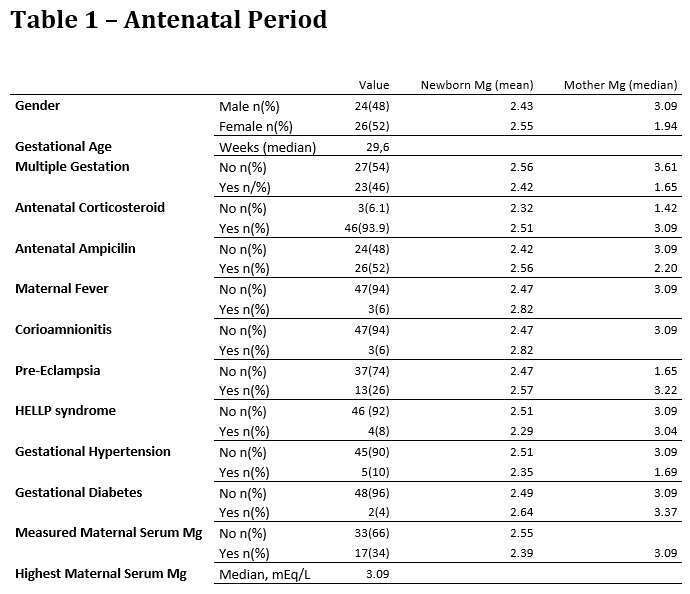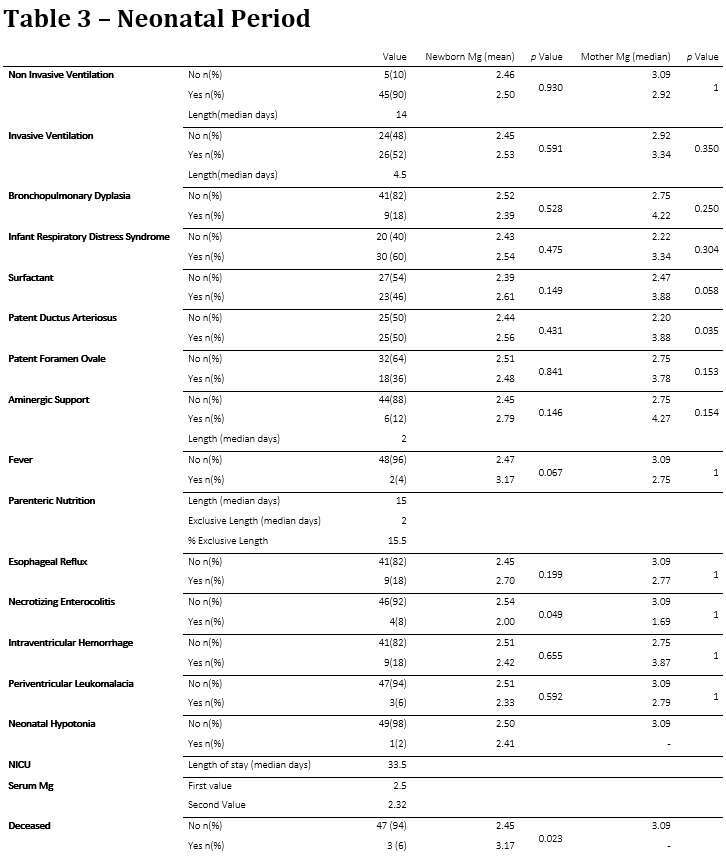
Antenatal Magnesium Sulfate: Retrospective Study of Clinically Relevant Outcomes in Preterm Neonates
2Neonatal Intensive Care Unit, Centro Materno e Pediátrico, Centro Hospitalar e Universitário São João, Portugal
Introduction: Antenatal magnesium sulfate (MgSO4) has been proven to be neuroprotective to the preterm newborn. However, evidence regarding its adverse effects in the newborn is lacking.
Objective: To analyse adverse effects on preterm infants whose mothers have been given MgSO4 treatment and correlate with serum Mg levels in the newborn.
Methods: Selected all newborns less than 32 weeks of gestational age born in our hospital between 2016-2018 and admitted to our level 3 Neonatal Intensive Care Unit (NICU) whose mothers have been given antenal MgSO4. We then conducted a retrospective study with statistical analysis.
Results: Fifty infants were included. Serum magnesium was measured in 34% of the mothers, with a median value of 3.09 mEq/L. The median newborn serum magnesium at approximately 24 hours of life was 2.5 mEq/L. A strong positive correlation between mother and infant serum magnesium was observed, with a Spearman value of 0.837. Four infants presented necrotizing enterocoltis (NEC) and its median serum magnesium (2 mEq/L) was significantly lower than in infants without the condition (2.54 mEq; p = 0.049). When corrected for gestational age, an increase of 0.01 mEq/L resulted in a 5.3% reduction in the odds of developing NEC (Wald p value =0.023). Twenty-five children were diagnosed with patent ductus arteriosus (PDA). These infants’ mothers had a significantly higher serum Mg (p=0.035). This was not confirmed when corrected to gestational age (Wald p value = 0.783). No difference or correlation in newborn or mother Mg levels were found when analysing further adverse effects, ventilation days, parenteral nutrition dependency, NICU stay, or other outcomes.
Conclusion: This study suggests that magnesium can be protective against NEC, but not in other morbidities. However, its retrospective nature and the small sample size (only four children developed the condition), determine the need of a larger prospective study.



Powered by Eventact EMS